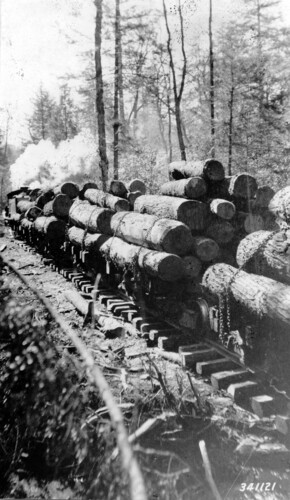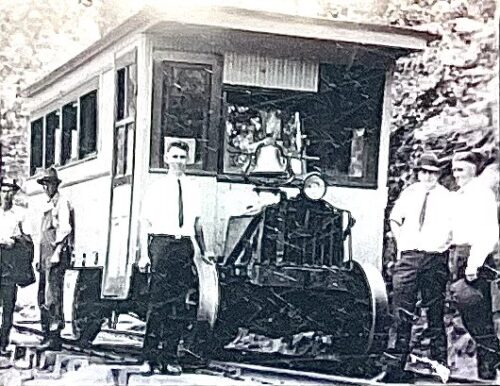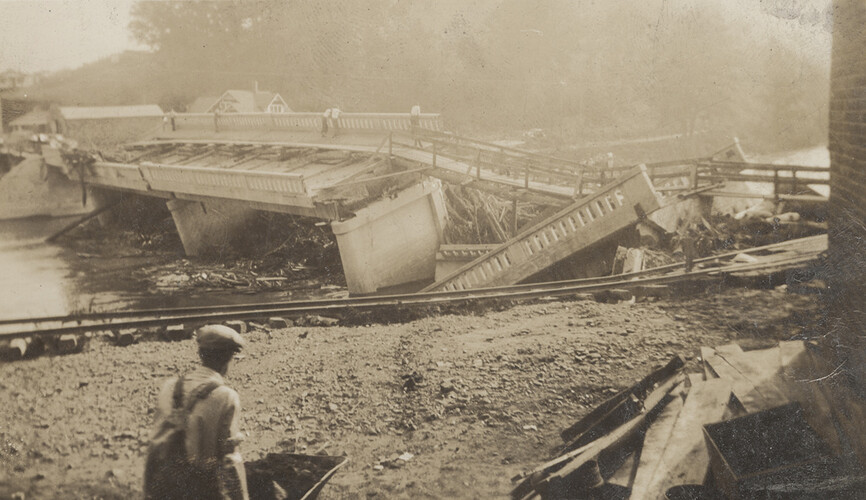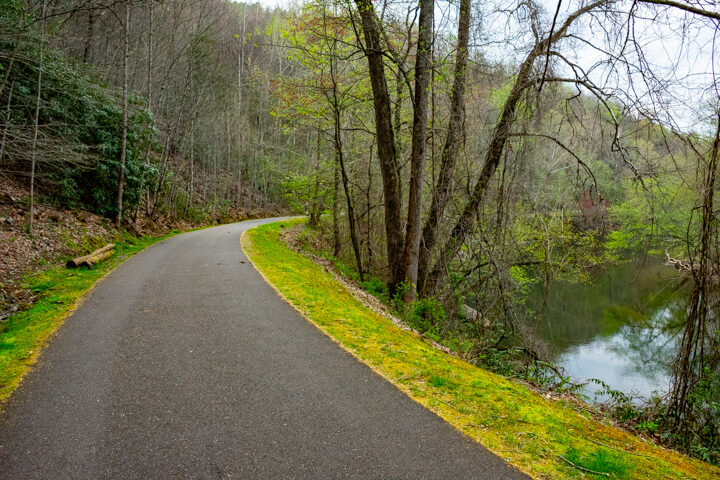If you’re an active walker, jogger, or runner in the area, chances are you’ve paid a visit to the Jackson County Greenway. If you haven’t, you’re in for a slice of rich history…
With the trail being relatively flat and seemingly “hand cut” into the side of the mountain, this raises questions. Could this once have been a century-old railroad to Western Carolina University?
When decommissioned railroads get ripped up, infrastructure and right of way cease to exist. Mother Nature takes back over and all traces that mighty locomotives once trudged by are all but a memory. Some of these pathways are preserved and even turned into roadways such as Roseboro Road in Edgemont which follows the path of the long-forgotten Carolina and Northwestern Railroad. Others are easily transformed into greenways due to the pre-made passageways created decades prior. For the Jackson County Greenway, this case is no different. As I revealed in a prior story, Cullowhee was once served by rail and the Jackson County Greenway is said to sit right where the railroad tracks used to run.
Daniel Wells, now retired, has a knack for the past and is an expert on Western North Carolina railroad history. Wells helped shed some light on the history of the lost railroad to Cullowhee and how it was once part of a vast countrywide network of lumber-hauling lines.

During the 1920s, it was no secret that Western North Carolina naturally had an accumulation of resources, especially timber. Logging operations in the area sprouted almost overnight with the establishment of such timber-processing mills as Blue Ridge Lumber in Dillsboro and the Carolina Pole Company at the entrance of Cope Creek. Large pockets of timber were found in the forests east of Cullowhee with such specimens as “tulip poplars” growing up to 10 feet in width. Railroads moved harvested timber to sawmills for processing into lumber.
According to Wells, the Jackson County Greenway showcases a mile of what was once a 13-mile railroad extending to East Laport from Sylva. It was known as the “Tuckasegee and Southeastern” (T&S) and served a crucial role in transporting processed lumber to the outside world via the Southern Railroad connection in Sylva.
The T&S was incorporated on Aug. 6, 1920, and the line was quickly completed in 1922. Along this route between Sylva and East Laport were the towns of Webster and Cullowhee. Wells informed me that the T&S had plans to extend the railroad further but never became a reality.
“The T&S was very profitable and had every bit of funds to extend the line beyond East Laport,” Wells said.
“They wanted to push west to Lake Toxaway to establish a connection with the Southern Railway. The Southern had a line terminating there from Hendersonville but unfortunately the T&S never made it to Lake Toxaway. The T&S didn’t last long which is why it’s so hard to find traces.”

Although the T&S never reached its dreams, the line was profitable, and the biggest customer was the Blackwood Lumber Company at the end of the line in East Laport. The T&S also offered passenger service to those travelling to and from Sylva. At this time, WCU was known as the Cullowhee Normal & Industrial School and students who needed transportation could hop on the T&S on the west side of campus. Ironically, the T&S’s passenger service was quite literally a “Packard” school bus outfitted with locomotive wheels. Up to 30 people could ride at a time and students could ride for free.
During the 1930s, the timber industry became increasingly competitive. Trucks were rising as the primary means of transportation thus leaving logging railroads obsolete. Because of this, various lumber companies and their railroads aimed to stay afloat but were soon unprofitable and eventually went bankrupt. The T&S held on for as long as it could even in the midst of a catastrophic Tuckasegee River flood on Aug. 13, 1940.
“The line didn’t want to die,” Wells said. “Despite a lot of the tracks being washed out from the flood, the railroad didn’t quit then. They built it right back and kept running trains until the very end.”

The official end for the T&S was when the Blackwood Lumber Company in East Laport closed in 1945 as did hundreds of other logging companies across the region. The fares for the passenger bus were not enough to keep the T&S afloat and the tracks were soon ripped up for its salvage value. 38 employees were suddenly out of a job. Portions of the right-of-way went on to be used for roads that still exist today. In Cullowhee alone, Ledbetter Road, South Wayehutta Road, and even parts of Highway 107 use the old T&S pathway. West Rogers Road in East Laport also utilizes the path.
Other portions of the right-of-way were left untouched and can still be seen during winter. Those that drive along Wayehutta Road across from the Tuckasegee River can spot man-made rock cuts seen hugging the side of the mountain where the T&S once carved their way to East Laport over 100 years ago. With the railroad quickly forgotten, the only lasting impact seemed to be a memory.

Over a half-century later, Jackson County officials noticed a naturally preserved pathway between Cullowhee and Sylva that happened to be an untouched stretch of T&S right-of-way. The path was scattered with brush but was otherwise intact. A trail was proposed between two points: one being near the intersection of Highway 107 and Old Cullowhee Road, and the other at the end of Monteith Gap Road. In 2013, construction began on the new greenway and thanks to the lasting impact on the ground from years of railroad ballast, all that was needed was to clear brush, lay new gravel and put down asphalt. A handsome arched footbridge was completed on the northern most point of the trail and in 2016, the ribbon was cut. Today, the greenway is completely accessible, smoothly paved and showcases some of the most beautiful scenery the area has to offer.

Located along the trail are markers that tell historical stories and provide information on the wildlife and plants that can be spotted. Out of breath? Or want to watch the Tuckasegee River calmly flow by? How about both! The greenway has various benches along the route.

If you’re going to go search for railroad spikes however, you won’t have any luck. Trust me, I looked! I paid the trail a visit early this past April and although I didn’t find any physical railroad artifacts, I couldn’t help but immerse myself in what was once a bustling little railroad line.
I imagined riding to Sylva in the old Packard bus, jolting back and forth on rickety track and feeling the cool breeze along the banks of the Tuckasegee River. I thought of the countless laborers during the railroad’s construction, only to have their hard work removed a mere 25 years later. Although the tracks are gone, it is comforting to know that a “trail” of history remains. Give it a walk. Or a run. You won’t be disappointed!


